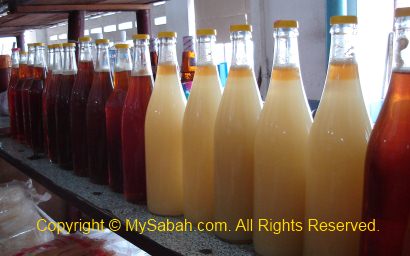
Talking about honey bees, probably I can share something I learn from the honey bee experts (Nikolaus Koeniger, Gudrun Koeniger and Salim Tingek). There are five species of honey bees in Borneo. One of them is Apis nuluensis (nulu means Mountain in Dusun language), a new species endemic to Sabah. They found its nest in a tree hollow near Laban Rata. There are 9 species of Apis honey bees in the world. The dorminant honey bee species of Sabah is Apis koschevnikovi.
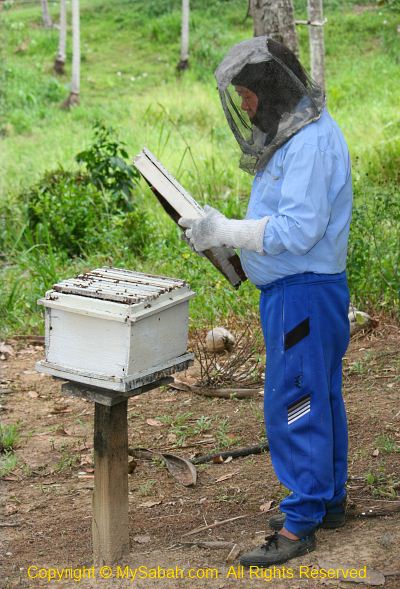
Apis cerana is the most common honey bee species being farmed (domesticated) in Sabah. In Kudat you can find many bee farms around and they have become tourist attraction of villages.
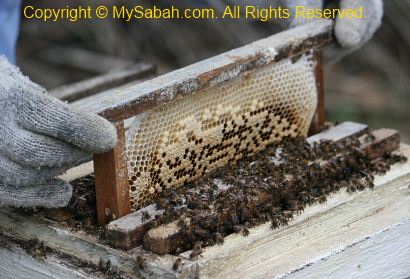
The “Gelodog” (hollow log) bee farming method is destructive, as you may damage the bee hive when you open the cover to collect the honey. The more sustainable method is by using Movable Frame Hive (like photo above).
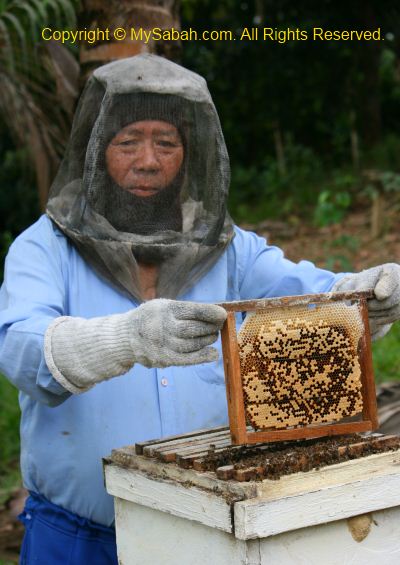
Apis cerana honey bee is an Asian bee species, and it is not as famous as the European bee such as Apis Mellifera. We pay RM40, 50 to buy a small bottle of imported honey, even though our local honey bees also produce high-quality honey. Our environment is cleaner and more nature than the western countries. By right, our honey is better. We only don’t package our honey and turn it into a $ound brand.
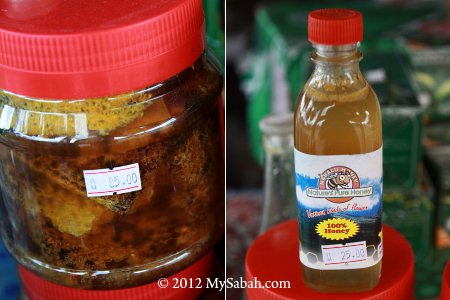
Pic: a small bottle of Sabah honey (right) can cost MYR25 (≈USD8.33), expensive, but still cheaper than imported honey.
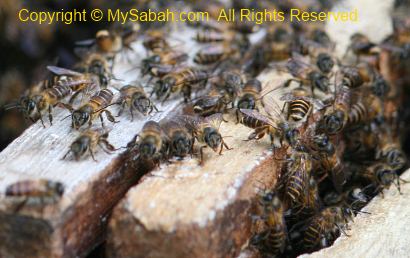
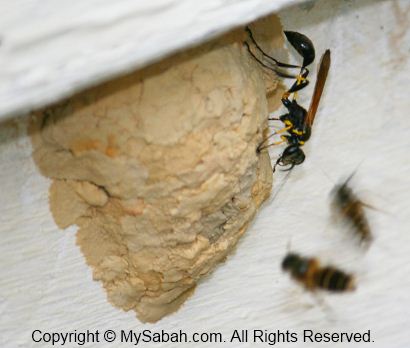
Photo above: unwelcome guest detected by honey bees. Many natural predators and thieves are eyeing for the sweet honey and want to get a share. Besides stinging, honey bees have many ways to deal with enemies. Like the “sticky ring” next to the hive of Apis andreniformis bees, ants and other bugs who want to approach the hive will be glued. The powerful mandible of drone (soldier bee) can chew off their heads too.
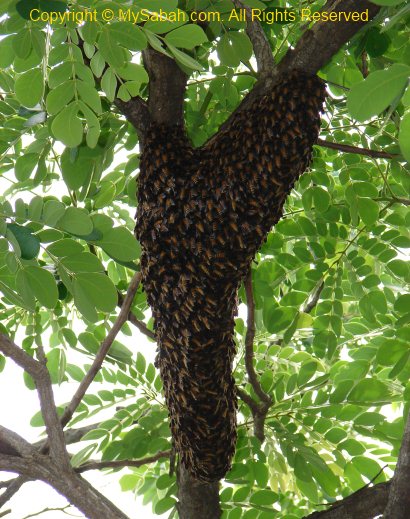
Here comes the most famous bee of Sabah, Apis Dorsata. This largest wild honey bee of Sabah is not only famous for its honey, but also its aggressiveness. Chinese calls it “Ba Gong Mi” (八公蜜) and this bee means horror. Stealing honey from these bees brings death penalty. I sweated when a bee expert showed a photo of her only 2 feet away from the dorsata swarm. She says it is ok, because the swarm is looking for a nesting site so the bees are not in the mood of protecting honey. I can’t read bee language so I will never dare to try that. I advise you not to too..
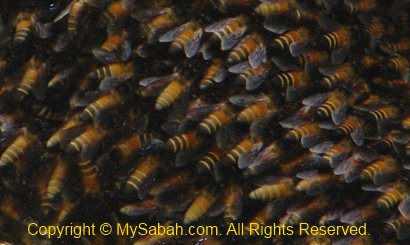
Apis dorsata specie is not a suitable candidate for bee farming, as they are not cavity dwellers. For safety and easier navigation, they love to build their hives high on tree, especially tall Menggaris tree. But my God, this bee seems to love to nest on Rambutan fruit tree too. Village kids like to throw stone to pluck Rambutan and that’s how they hit the jackpot by accident. Some locals hunt for their honeycomb and very likely the wild honey you buy in local market is from A. dorsata (or Apis cerana). The bee larvae is also edible. My mom tried it before and say it tastes like milk. Very healthy food I suppose.
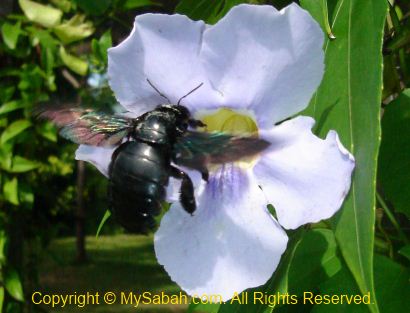
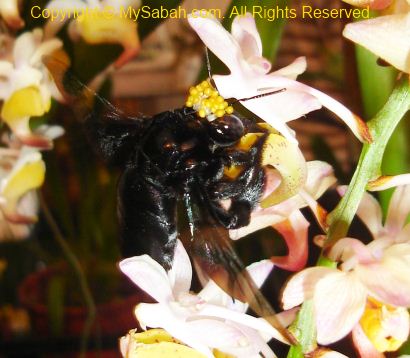
The big black bee (anyone knows its name?) was used to be the bee I feared the most. Later I found that it is very gentle and rarely attacks people. The only thing I know about it is this bee likes to drill a hole on the wood and nest inside, and it doesn’t live in group. Now I find it very cute. Oh Bee-Bee…
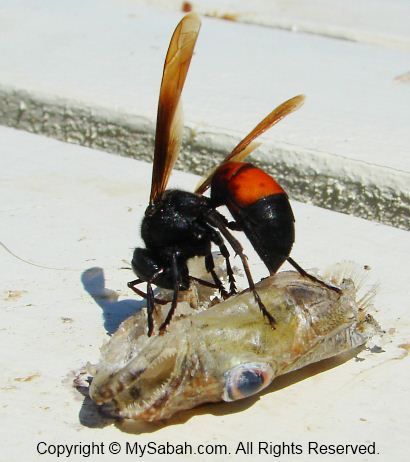
Ok, this one is a hornet, not a bee. If you see a rat corpse without eyes, that’s the work of this hornet. So far I haven’t seen any of them harvesting nectar, so I assume they like rotten meat. For those who do fishing in the wild, you better cover the fishes and bait, otherwise you will find many hornets come and feast on them. Anyway, it is quite safe to get near to them, as long as its nest is not somewhere nearby. Chinese calls it Tiger Head Bee (虎头蜂). Its bright orange stripe is a clear warning. Everyone, who was stung by this hornet, says it scores 10 of 10 out of pain scale and the wound may leave a permanent scar. Imagine if you are stung by hundreds of them. The only way to escape the attack from swarm of hornets is to jump into the water, no matter you know how to swim or not. It is far more better to drown rather than being stung to death by hundreds of hornets.
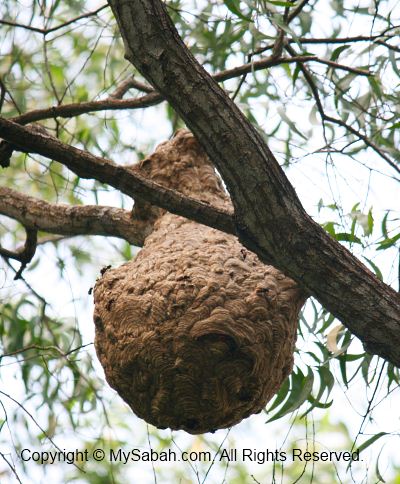
Honey bees die if they sting, coz they detach the sting that is linked to vital organs, this is not the case for hornets. Many even call them killer bees. Hornet hives are very common on the trees of countryside. If you come too near, they will send a few patrolling hornets to check on you. It is important that you slowly walk away from their hive and don’t do anything stupid that makes them perceive you as a threat.
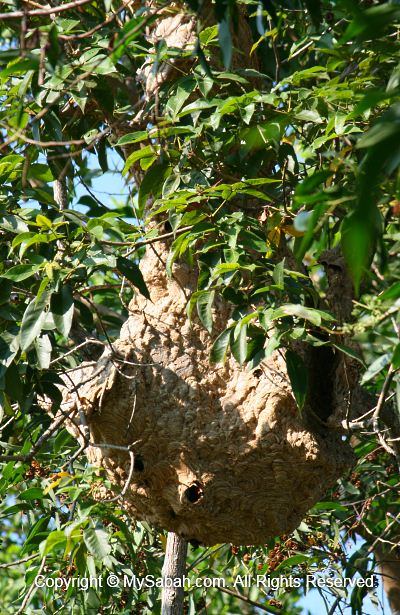
Hornets like to nest on the tree, inside the shrub, under the roof and cliff. Their nests are very beautiful. However, after some days, the nest will grow from fist size to size of sandbag (or even bigger!). That’s how they get another name, i.e. Sandbag bee (泥包蜂 in Chinese). If you see their nest, don’t try to chase them away by boxing their hive like sandbag or fight them with mosquito insecticide. Just call the Fire Department, they know about to eliminate the nest (and it is a free service).
Can’t believe I can write so much about bees, hope you enjoy reading this…
http://www.mysabah.com
No comments:
Post a Comment